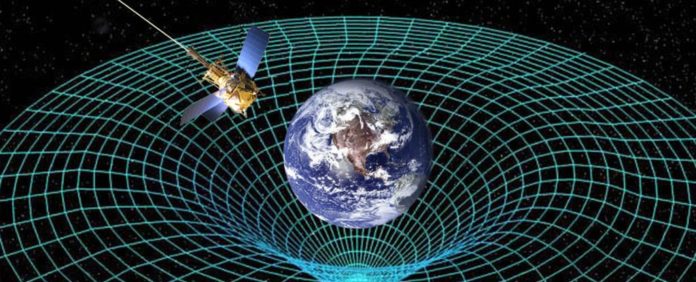Physicists and philosophers seem to take a peculiar interest in exposing the common misconceptions about the reality of nature and leave us dumbfounded. But Tim Maudlin comes from the rare breed of physicists who think that our common sense and perception of the world can give us a better insight into reality than we think.
Maudlin is a Professor of Quantum Physics at New York University. He is one of the leading philosophers of physics who spent their life studying Entangled Quantum Particles. The concept of entanglement among quantum particles is as counter-intuitive as it can be, but Maudlin believes physicists have ignored the transformative characteristics of entanglement. Though he is against the idea that the quantum links, which are bizarre quantum bonds connecting distinct moments in time, constitute the fundamental structure of the universe instead of space-time.
Maudlin makes a case for the conventional view of time that it has a built-in arrow indicating its direction. He considers time as a fundamental property rather than derived from deeper reality. He thinks of change as a real phenomenon as opposed to a trick of perspective. Physical laws hold a central position within time, which influence the matter collectively, to generate each moment. Maudlin is defending against the reasons that scientists give for denying this commonly accepted wisdom.
In his mathematical argument “New Foundations for Physical Geometry,” he rethinks the topology in a way that provides a clear distinction between space and time. In Modern physics, time and space are conceptualized in the same isotropic way, with no innate direction. Instead of describing the neighborhood of a point in space or time, Maudlin bases his version of topology on directional lines. To match the results of standard topology, Maudlin let time keep an intrinsic direction proposing a motion based geometrical structure.
The idea of the directionality of time is a natural view. Maudlin doesn’t understand how physicists managed to convince themselves against the idea for so long. The idea came to him out of his own ignorance when he wasn’t able to visualize the connection between the technical space-time machinery and the algebraic concepts he was using. The notion that time is just a fourth dimension is wildly misleading. Standard geometry wasn’t developed by keeping space-time in view. It was designed to solve just spaces without any directedness in them. In Einstein’s special theory, time was introduced as a fourth dimension, but it was not spatial. In the case of time’s direction, we have a distinction between future and the past, and no two timelike directions can be continuously transformed into one another. But a spacelike direction can be continuously rotated into other spacelike direction.
The earlier developments in space-time were algebraic. The more complicated the algebra, the further you drift away from having a geometrical intuition about the process. As a purely algebraic quest, bi-directionality of time is understandable, but in the physical world, the geometry fails to keep up. To accommodate time, Maudlin rebuilt the approach by specifying which sets of points are lines as opposed to the standard practice of identifying the set of points as ‘open.’ A very natural thing to do in his approach is to put directionality on the lines, which is quite contrary to Euclidean geometry.
In Maudlin’s approach, putting down a linear structure on a set of points following his axioms lays down a premise and generates a topology. Neutrality of lines instead of being discrete or continuous also comes as an added advantage.
Time-reversal symmetry is one of the arguments scientists use to refute directionality of time, but Maudlin argues that the time-reversal symmetry itself presupposes the directionality of time. Time-reversibility can not be denied, but it doesn’t imply the absence of time directionality. Time-reversibility is a process that’s running forward in time.
The big question here is why does one kind of things happen, and other sorts of things don’t? Why do things always start out in a low-entropy state? Why don’t they start in a higher stable entropy conditions?
One possible answer to the question is that there must be something before the big bang. The bubbling off of this universe from a chaotically inflating space-time must have some physics working behind it, which implies the possibility of a certain character of bubbles.
The specification of a low entropy state seems enough to give an effective direction to time without the need of internal directedness. But as a consequence, a directionless time will turn into a spatial dimension, where nothing seems to happen, “a block universe.” An unchanging dimensionless four-dimensional spatial object won’t react to any boundary conditions in terms of time. Imposition of an initial boundary condition doesn’t create time or turn a space dimension to a temporal one. In fact, the use of word “initial” is unjustified if we don’t give a direction to time. The direction of time distinguishes the initial state from final state.
To say that time doesn’t actually pass but it is only a virtue of entropy doesn’t make any sense. The idea that block universe is static is baseless. How can something be static? It means as time goes on, it doesn’t change its state. Block universe doesn’t exist in time, time exists inside the block universe. Change is not an illusion; it is a real phenomenon.
Causal structure of the events happening in our universe is temporal. Everything happening around us is linearly ordered, the present state produces the successive states. Only the earlier states give the complete information about the successive state, not the other way around. The direction of causation is also the direction of explanation. Laws of nature are like a never stopping machinery producing successive states. Laws of nature can be spatial or temporal. Maudlin even claims that no fundamental laws are purely spatial and that where there are spatial regularities, they have temporal explanations. Laws hold a fundamental position, where all other things are derived from the laws operating, and the operation has this temporal characteristic.
People also argue against the fundamental time and consider it as an emergent property. They believe that at some point there was no time in the universe and then time emerged at some later point. Laws are basically differential equations in time explaining how things evolve. Without time there is no evolution. As emergence is equivalent to evolution, the appearance of time is a temporal emergence, where it seems as though time emerges temporally out of non-time, which then seems incoherent.
Maudlin’s take on one of the most talked about topic is not new, yet it is refreshing. He believes he has hit a fundamental feature of the universe that can not be explained in terms of any other thing.


















